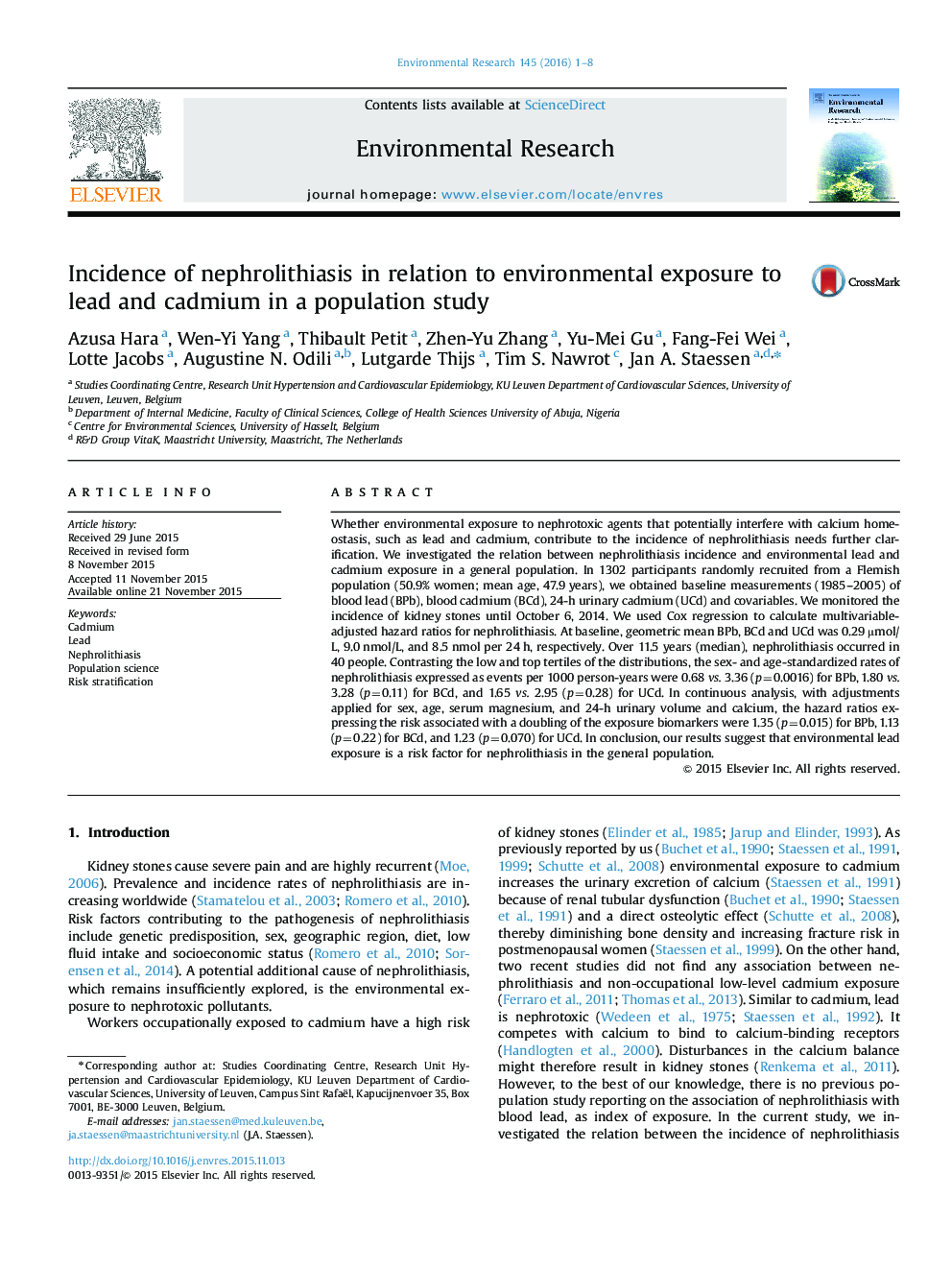| کد مقاله | کد نشریه | سال انتشار | مقاله انگلیسی | نسخه تمام متن |
|---|---|---|---|---|
| 6351474 | 1622558 | 2016 | 8 صفحه PDF | دانلود رایگان |
- Prevalence and incidence rates of nephrolithiasis are increasing worldwide.
- Lead and cadmium interfere with calcium homeostasis and might cause nephrolithiasis.
- Environmental exposure to lead, not cadmium, predicts nephrolithiasis in the population.
- Safety standards for environmental lead exposure need to account for nephrolithiasis.
- Reducing environmental exposure to lead remains a priority.
Whether environmental exposure to nephrotoxic agents that potentially interfere with calcium homeostasis, such as lead and cadmium, contribute to the incidence of nephrolithiasis needs further clarification. We investigated the relation between nephrolithiasis incidence and environmental lead and cadmium exposure in a general population. In 1302 participants randomly recruited from a Flemish population (50.9% women; mean age, 47.9 years), we obtained baseline measurements (1985-2005) of blood lead (BPb), blood cadmium (BCd), 24-h urinary cadmium (UCd) and covariables. We monitored the incidence of kidney stones until October 6, 2014. We used Cox regression to calculate multivariable-adjusted hazard ratios for nephrolithiasis. At baseline, geometric mean BPb, BCd and UCd was 0.29 µmol/L, 9.0 nmol/L, and 8.5 nmol per 24 h, respectively. Over 11.5 years (median), nephrolithiasis occurred in 40 people. Contrasting the low and top tertiles of the distributions, the sex- and age-standardized rates of nephrolithiasis expressed as events per 1000 person-years were 0.68 vs. 3.36 (p=0.0016) for BPb, 1.80 vs. 3.28 (p=0.11) for BCd, and 1.65 vs. 2.95 (p=0.28) for UCd. In continuous analysis, with adjustments applied for sex, age, serum magnesium, and 24-h urinary volume and calcium, the hazard ratios expressing the risk associated with a doubling of the exposure biomarkers were 1.35 (p=0.015) for BPb, 1.13 (p=0.22) for BCd, and 1.23 (p=0.070) for UCd. In conclusion, our results suggest that environmental lead exposure is a risk factor for nephrolithiasis in the general population.
Journal: Environmental Research - Volume 145, February 2016, Pages 1-8
